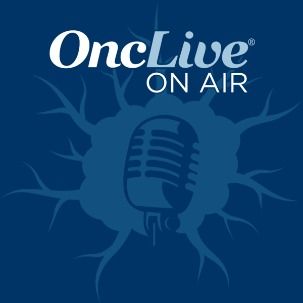Article
Updated Data Refine Adjuvant Paradigm in HER2+ Early Breast Cancer
Author(s):
Katherine D. Crew, MD, discusses the updated results of the KATHERINE trial, as well as other data regarding the adjuvant treatment paradigm in early-stage HER2-positive breast cancer.
Katherine D. Crew, MD

Katherine D. Crew, MD
Updates to the adjuvant setting for patients with HER2-positive early breast cancer have led to interesting challenges in this space, said Katherine D. Crew, MD.
“Newer drugs are [being introduced] to the adjuvant setting for early-stage disease with curative intent,” said Crew. “Also, we are investigating de-escalation of therapy; adding drugs can increase cost and toxicity. For some of the more favorable patients, we hope to de-escalate therapy and spare patients of some long-term toxicities.”
In May 2019, the FDA approved ado-trastuzumab emtansine (T-DM1; Kadcyla) for the adjuvant treatment of patients with HER2-positive early breast cancer who have residual invasive disease following neoadjuvant treatment with trastuzumab (Herceptin) and chemotherapy, based on the 50% reduction in the risk of invasive disease recurrence or death with the T-DM1 regimen versus trastuzumab alone that was demonstrated in the phase III KATHERINE study.1 Additionally, results showed an invasive disease-free survival (iDFS) rate at 3 years was 88.3% versus 77.0%, respectively; this led to an absolute improvement of 11.3%.
At the 2019 San Antonio Breast Cancer Symposium (SABCS), a poster presentation of multiple subanalyses from the KATHERINE trial showed that patients derived a iDFS benefit with T-DM1, regardless of the type of neoadjuvant chemotherapy used.2 Additionally, 4 high-risk patient populations, including patients who were operable at presentation with ypN-positive nodes and hormone receptor (HR)—positive disease, also showed improved iDFS with T-DM1 versus trastuzumab at 3 years.
In an interview during the 2020 OncLive® State of the Science Summit™ on Breast Cancer, Crew, associate professor of medicine and epidemiology at NewYork-Presbyterian/Columbia University Medical Center, discussed the updated results of the KATHERINE trial, as well as other data regarding the adjuvant treatment paradigm in early-stage HER2-positive breast cancer.
OncLive: How do you determine the optimal adjuvant treatment for patients with HER2-positive early breast cancer?
Crew: The APHINITY trial included patients with operable HER2-positive breast cancer who were either node-positive or high-risk node-negative. In addition to trastuzumab and standard chemotherapy, pertuzumab (Perjeta) was added. We knew the addition of trastuzumab in the adjuvant setting improves iDFS for patients with HER2-positive disease. The APHINITY trial demonstrated modest iDFS improvement with dual-HER2 blockade.
The second interim analysis [of the APHINITY trial] presented at the 2019 SABCS showed continued improvement in iDFS; however, most of that benefit was restricted to patients with node-positive disease. As a result, [the addition of] pertuzumab is standard for patients with node-positive HER2-positive breast cancer.
The problem is that many of those patients who have stage II disease should be getting trastuzumab or pertuzumab in the neoadjuvant setting. There are certain advantages to downstaging and assessing tumor sensitivity based on whether the patient develops a pathologic complete response (pCR) or not.
In the KATHERINE trial, patients received adjuvant chemotherapy based on [the presence] of residual disease post-neoadjuvant therapy. Patients were randomized to receive adjuvant T-DM1 or trastuzumab. Again, there was a significant iDFS improvement of about 50% with T-DM1. As such, it has become the new standard of care for patients with residual disease post-neoadjuvant therapy.
The results of the KATHERINE trial are perhaps more impressive in terms of the impact of [T-DM1], but we can consider continuing trastuzumab/pertuzumab in the adjuvant setting for patients who are lymph node-positive and have a pCR.
Where does neratinib (Nerlynx) fit into the adjuvant setting?
The ExteNET trial looked specifically at neratinib in the adjuvant setting after patients had completed their [1 year of] adjuvant trastuzumab. Again, there was a modest benefit in terms of iDFS with neratinib, but more of that benefit was restricted to patients with HR-positive disease.
These trials are challenging because the standard of care keeps changing. It is unclear whether adding another HER2-targeted agent is going to benefit these patients, particularly those patients with high-risk disease who are receiving pertuzumab and T-DM1 in the adjuvant setting.
Often times, these patients have [been exposed] to a lot of chemotherapy, 1 year of HER2-targeted therapy, and are expecting 5 to 10 years of endocrine therapy if they are HR-positive. To add another drug that potentially has adverse events, such as diarrhea, can be challenging for patients to adhere to.
Aside from node-status, how are you tailoring your treatment strategy for patients?
Most patients with small HER2-positive breast cancer, such as stage I or screen-detected disease, are excluded from large adjuvant trials with trastuzumab. The APT study was a single-arm trial that looked at these patients receiving weekly paclitaxel and trastuzumab for 12 cycles followed by adjuvant trastuzumab. The 7-year update, which was published in the Journal of Clinical Oncology in 2019, demonstrated an excellent DFS and overall survival [benefit].
We can think about sparing favorable patients from more aggressive chemotherapy with anthracyclines, for example. Anthracyclines increased cardiotoxicity in HER2-positive patients.
The ATEMPT trial, presented at the 2019 SABCS, also targeted this favorable-risk patient population. It looked at T-DM1 for 1 year in place of weekly trastuzumab/paclitaxel. It showed excellent short-term follow-up and at least a 99% DFS, but the toxicities were different. [Trastuzumab]/paclitaxel caused more acute neuropathy, but long-term T-DM1 was associated with abnormal liver function tests and thrombocytopenia that led to early discontinuation of treatment. The higher discontinuation rate, as well as the added cost, [tells me] T-DM1 is not quite ready for primetime for patients with favorable-risk disease. However, I do see a role for non-chemotherapy options in this patient population.
References
- von Minckwitz G, Huang C-S, Mano MS, et al. Trastuzumab emtansine for residual invasive HER2-positive breast cancer. New Engl J Med. 2019;380:617-628. doi: 10.1056/NEJMoa1814017.
- Mano MS, Loibl S, Mamounas, EP et al. Adjuvant trastuzumab emtansine (T-DM1) vs trastuzumab (H) in patients with residual invasive disease after neoadjuvant therapy for HER2-positive breast cancer: KATHERINE subgroup analysis. Presented at: 2019 San Antonio Breast Cancer Symposium; December 10-14; San Antonio, TX. Abstract P3-14-01.






%20(2)%201-Recovered-Recovered-Recovered-Recovered-Recovered.jpg?fit=crop&auto=format)

%20(2)%201-Recovered-Recovered-Recovered-Recovered-Recovered.jpg?fit=crop&auto=format)
%20(2)%201-Recovered-Recovered-Recovered-Recovered-Recovered.jpg?fit=crop&auto=format)